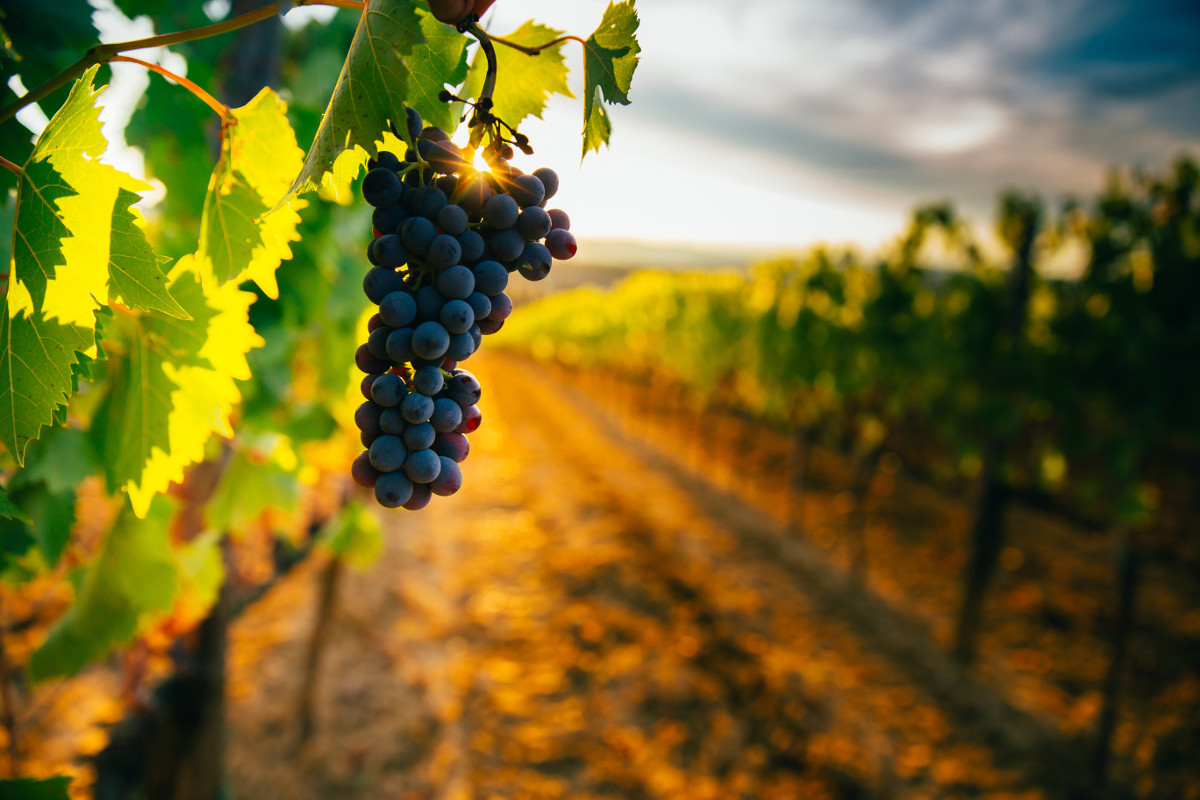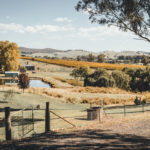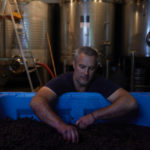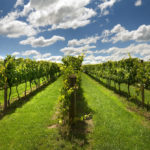Take a stroll off the beaten wine track and discover some truly unique New South Wales wine regions.
Compared to other wine-producing countries, with heavy regulations and stringent processes, Australia is pretty free when it comes to making unique wines. But even the highly experienced wine regions of Australia are sticking to what they know. And this is where the lesser-known wine regions have an advantage, where they eagerly experiment with grape varieties to produce some truly unique wine varietals.
In New South Wales, there are a handful of wine regions that still fly under the radar, but we’ve found three that share a good story. Here are three New South Wales wine regions that you’ve likely never heard of and are ready to be explored by travel enthusiasts and wine lovers alike.
Tumbarumba
- Courabyra Winery at Tumbarumba wine region. Photographed by Nick Clark Creative. Image via Shutterstock
How far is Tumbarumba from Canberra?
Tumbarumba is approximately a three-hour drive south-west of Canberra. Or, coming from Wagga Wagga, Tumbarumba is just under an hour-and-a-half drive away.
Thirty years ago, the Tumbarumba wine region began growing grapes to make sparkling wine. The decomposed granite soils were planted with chardonnay, pinot noir and meunier – the three main sparkling varieties. But even after decades of successful production, this established wine region still flies under the radar. Until now that is.
“One thing I will say is that Tumbarumba has been growing great quality fruit and making great quality wine for almost 30 years,” says award-winning winemaker Nick Spencer of Nick Spencer Wines. “But people just don’t know about the region, and I think it’s partly because there aren’t that many wineries.”
As noted, Tumbarumba’s main product was sparkling wine and it was the big commercial entities who were getting the fruit to make it. But most of the bottles weren’t labelled as ‘Tumbarumba sparkling wine’, so no one knew the fruit was from Tumbarumba.
“So for a very long time, nobody saw Tumbarumba on the label,” Nick continued. “But now, what’s really exciting, is there are a lot of young winemakers that are sourcing fruit from Tumbarumba and making really good quality wines and putting Tumbarumba on the label.
“So now when you go into a restaurant in Sydney, Melbourne or Canberra, nine restaurants out of 10 will be serving wine from Tumbarumba, and so that’s kind of introducing the market to these wines.”
- Nick Spencer. Image Supplied
Indeed, the roots of this small town still produce chardonnay and pinot noir, but they’ve opted for the non-bubbly kind in recent years. Yet, as expected, many young wineries are now experimenting.
“Just recently – only in the last four to five years – winemakers have started growing other varieties like riesling and grüner veltliner, and there’s a bit of temperinillo up here as well,” Nick says.
“So people are starting to explore other varieties.”
And if there’s one thing that differentiates Tumbarumba from other wine regions, Nick says the obvious one is its altitude.
“If you go on the basis that the closer you get to the equator, the warmer it gets – that can be offset by altitude,” Nick explains. “Tumbarumba is, latitudinally, quite far north in terms of vineyard regions around the world. It’s a long way away from Yarra Valley or the vineyards in Tasmania or New Zealand. But that latitude is offset by its altitude.”
Bathurst
How long does it take from Sydney to Bathurst?
Passing the Blue Mountains, it takes just over three-hours to get to Bathurst from Sydney.
Not many people consider Bathurst to even be a wine region, but with more than a few wineries in the area, it’s hard to argue against the notion. One of the more established vineyards in Bathurst is Renzaglia Wines. Since planting their first grapes in 1997, they’ve solidified themselves as a worthy winemaking contender.
According to Mark Renzaglia, the uniqueness of Bathurst wine falls on a number of things.
“One thing I’d say is that Bathurst has a fairly cool climate and, in fact, it’s extremely continental. By that I mean the difference between the average minimum temperature and the average maximum temperature is quite high,” Mark says.
“There wouldn’t be many other areas in Australia that would be that continental and still grow grapes.”
He also notes that most of the soils in the region are old granitic-based soils, where fertility is hard to muster from.
“We’re such a young region,” he continues. “It will probably take another 50 years to really figure it out. We’re having a lot of luck with some of the standard varietals like chardonnay and shiraz. And then maybe to a lesser extent; cabernet, riesling.”
“[On] the cooler sides, we’re having some good luck with riesling. And then some of the alternative varietals are showing good promise; varieties like sangiovese, pinot gris/grigio and Spanish varieties like tempranillo.
“We believe tempranillo has a good future. At this stage, we’re still kind of experimenting and exploring and learning, really.”
Mark’s passion for wine is the culmination of years working in the industry. In 1987 he first visited Bathurst, moving from Illinois in the US to be with his wife Sandy. Eight years later, they bought a small property in the village of O’Connell, 20 kilometres south-east of Bathurst’s town centre. Two years later they planted their first grapes: chardonnay, cabernet sauvignon and merlot. It started as a hobby, while Mark worked full-time as a viticulturist/winemaker for Winburndale Wines. Now, he dedicates his life to Renzaglia Wines.
New England
- Vineyard New South Wales. Photographed by Phillip Minnis. Image via Shutterstock
Where is New England in New South Wales?
The New England region sits north in New South Wales. To reach New England from Sydney it will take under a six-hour drive passing Newcastle and Port Macquarie.
The final stop is the New England wine region, which stretches north of Tamworth towards Inverell, with altitudes ranging between 800 and 1100 metres. Its degraded granite soil and continental climate help produce some punchy reds and truly unique whites nowadays. But, according to winemaker Mark Kirkby at Topper’s Mountain winery, the New England wine region’s wayward history didn’t help.
“George Windham (from the Windham Estate in Hunter Valley) had a big property in New England and he took cuttings from the Hunter up to New England and started the local wine industry in 1860,” says Mark. “And it grew quite rapidly for 50 years until the early 1900s.
“But a lot of it was for the coach houses, where they had up to five acres out the back to stock the bar. So not a lot of it was exported, but certainly, Windham and a few others were exporting out of the region and overseas.
“Then the trains came through in the early 1900s and the industry just disappeared. By 1940 it was gone.”
But, 30 years later, the renaissance of New England began. And, unfortunately, it was a fresh start.
“A lot of the history of what they planted back then, in terms of varieties, have disappeared,” Mark explains. “The only one we could put our finger on was malbec. Although, you could assume they were growing the same things down here in Hunter Valley. But we didn’t really know that.
“So we had to go back to square one, and so we planted four varieties: tempranillo, riesling, gewürztraminer (guh-voorts-trah-mee-ner) and chardonnay. And then the fifth block was 15 rows of different varieties to see what did the job.
“And, it turns out, things that have made the best wine and been the least troublesome are Mediterranean varieties.”
As for why New England has yet to build a grand local name, Mark offers an insight:
“We’ve been a bit off the radar because we’ve never been able to entice the big boys up there, so we don’t get any marketing off the back of the big end of town branding New England. Which has made it pretty tough.
“But there are bloody good wines coming out of it and they’re getting better.”






Ready to explore some of Australia’s best wine regions? Before you pack your car be sure to read our guide with six tips for organising a New South Wales wine road trip. Or, to learn more, here are three world-class female Australian winemakers you should know.
We acknowledge the traditional owners of country throughout Australia and recognise their continuing connection to land, waters and culture. We pay our respects to their elders past, present and emerging.
Feature image: Photographed by Angyalosi Beata. Image via Shutterstock.